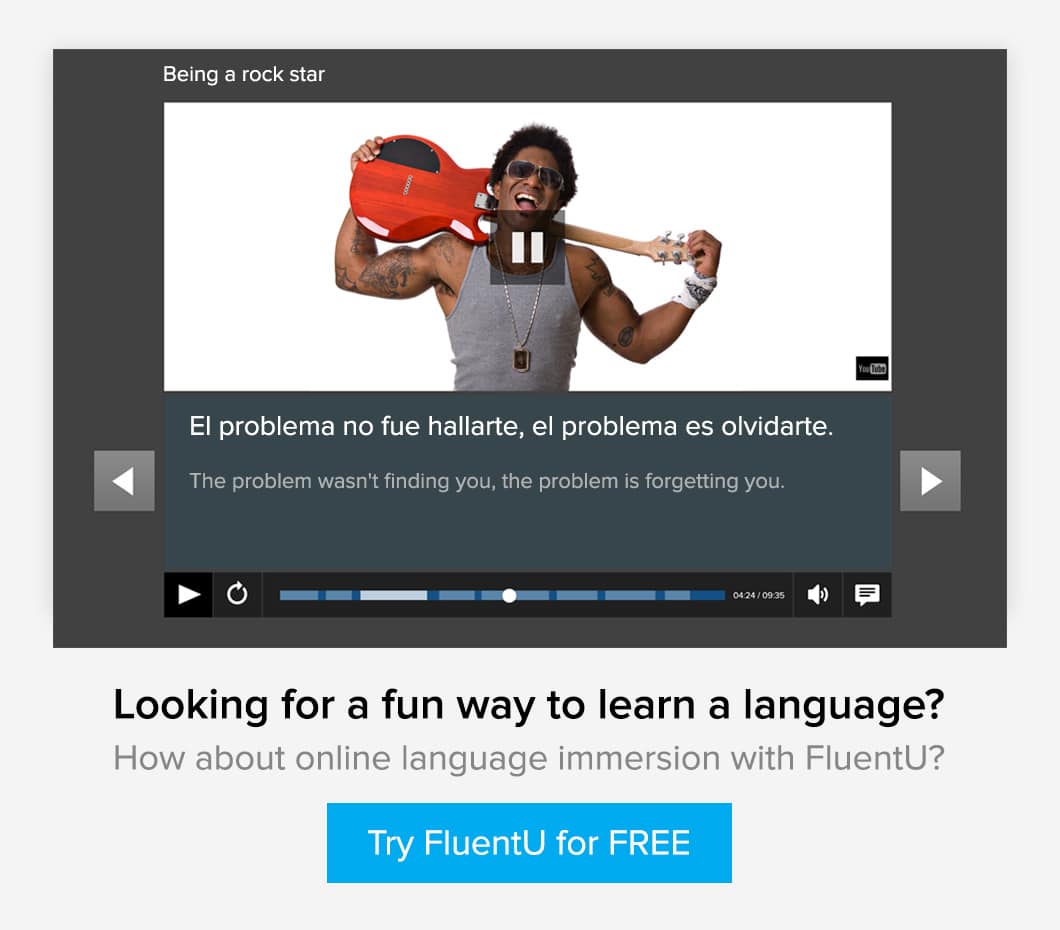Learn about brain health and nootropics to boost brain function
Language, Culture and Learning: Learn Japanese on YouTube


Sometimes, sitting in class and listening to a staged mother-daughter conversation on audio cassette can definitely feel a little “20th century.”
And if the only native speaker you otherwise listen to on the reg is your 先生 (せんせい) — teacher, it’s natural to want to expand your horizons.
Lucky for you, in today’s day and age it’s easy enough to get exposed to different kinds of exciting learning materials—and YouTube is the perfect place to start!
Learning Japanese with YouTube is ideal for so many reasons! In this post, we’ll cover the why, how and where of achieving fluency through some awesome YouTube channels.
Download: This blog post is available as a convenient and portable PDF that you can take anywhere. Click here to get a copy. (Download)

Why Should You Learn Japanese with YouTube?
It’s almost a no-brainer, but there are a number of reasons why you might want to incorporate watching videos into your language-learning routine:
Study anywhere, any time
Even the busiest of schedules should be able to accommodate some routine video-watching. All you need is a decent internet connection and a tiny bit of discipline. On the bus, during your lunch break, over breakfast or before bed, you can always find time to watch a Japanese video or two. It’ll only take a fraction of your time.
Maybe you can even book a workplace meeting room to devote a quiet place to your daily language practice (just don’t do it when you’re supposed to be working, of course!).
Tune your ear to different speaking styles
Most people learn “Standard Japanese,” known as 共通語 (きょうつうご) — common language. But there are several regional dialects and speaking styles that are worth getting familiar with.
One other thing to keep in mind is that there are so many different styles of speech (like pace, vocab, tone of voice) even within “Standard Japanese” that getting acquainted with them can prove beneficial in the future.
Give your memory a boost with visual aids
Watching a video is in itself a great visual aid. You might find that you associate a word with the narrator’s expression when he or she uses it or with a particular scene that’s playing out on screen.
Other times, videos use animations and images to help you remember a word or visualize a kanji. It’s much more effective than trying to drill a list of isolated words into your brain!
Why Study with YouTube, Specifically?
YouTube’s an ideal place to start if you’re looking to include videos in your language-learning routine. There are a number of reasons for this. Let’s delve into them:
You’re already doing it
More likely than not, YouTube’s already a part of your life, whether you’re using it to watch cat videos (no one’s judging) or catch up on the Top40.
It’s only a tiny step from there to using it for learning a language, and there’s no learning curve involved!
It’s your (free!) window into contemporary Japan
An annual trip to Tokyo isn’t necessarily realistic for everybody… and that’s okay! YouTube is a 100% free way to access excellent, up-to-date information on what Japan is like today. So there’s no need to break the bank before you’re ready to get on that plane!
The sheer diversity of content is amazing… and motivating!
If you’ve ever dreamed of designing your own study plan, YouTube is the way to do it. There’s a huge range of content available! You can watch recorded Japanese lessons or go the authentic route and learn through songs, movie reviews, interviews, animations and so much more.
There’s something for every level of learner, too. Your study plan can evolve as you improve your language skills and grow as a learner!
Many seasoned YouTubers love interacting with their followers
Have you noticed how a lot of vloggers actually answer the questions they get in their comments or invite opinions and input from their viewers? Regularly using YouTube can help you become a part of a unique community of learners.
Browse through the comments on videos and leave your own comments and questions—someone might be happy to help and you might even get your question answered by the YouTuber!
How to Effectively Use YouTube to Improve Your Japanese
So you’re sold on YouTube, but how can you make sure you’re doing it right? As you probably know, it’s very easy to get distracted on YouTube and get sucked into an endless cycle of cute animal videos.
Here are a few tips to keep you focused:
- Identify your immediate needs. Are you looking to learn new words, find out about the different お祭り(おまつり) — festivals in Japan or get on top of the latest slang? Make sure you’re clear on what your immediate needs are so you can target them efficiently.
- Find a channel and stick with it. Once you know what you’re looking for, scout around. After you explore and find at least one channel that you know fits your needs, be loyal to it. You’ll progress much faster if you stay focused and you’ll be able to measure your progress more effectively if your learning isn’t too dispersed.
- …But stay open to relevant videos from other channels! That doesn’t mean you need to block out all other channels or stick with yours until you’re bored out of your mind! You might find that one YouTuber does a Monday morning dialect routine that cracks you up, or you might enjoy the occasional anime update. Be open to videos that complement your normal routine, too!
- Keep a notebook near you. We have some bad news for you: “Passive watching” is never enough. So keep a notebook with you and write down any new words, expressions or grammatical forms you pick up as you watch. Don’t forget to come back to them regularly. And remember: It’s okay to rewind!
- Follow your favorite vloggers on other social networks too. A huge plus of following a YouTube channel is interacting with your favorite YouTubers and becoming a part of their community. This often means you can ask questions, contribute content, make requests or give them your feedback.
For example, Dogen did a great video on dating practices in Japan where he crowd-sourced all kinds of questions from Twitter!
Are you now 100% convinced but not sure where to start? No problem! We’ve rounded up the best channels for you, by level, and included a video highlight for each one.

And if you’re looking for a single source that covers all learning levels—from beginner to advanced and everything in between—check out FluentU. FluentU takes authentic Japanese YouTube videos like movie trailers, music videos, news and inspirational talks, and gives them a learning kick.
Use interactive flashcards, vocab lists, annotated subtitles and personalized quizzes that evolve as you learn to deepen your learning—and take you one step closer to fluency!
YouTube Channels for Beginning Japanese Learners
Abroad in Japan is a pretty comprehensive intro to travel and life in Japan run by a British vlogger. Most videos show you how far you can get without entirely mastering the language—which is pretty encouraging!
This channel is great for anybody who’s starting out with Japanese and wants to get acquainted with the culture. For a taste of what it has to offer, check out a video on food and drink in Japan and the essential vocab you’ll need to make it through the night!
This is the YouTube channel of the learning website JapanesePod101.com, which offers tons of great content for learners of all levels, like videos and podcasts.
The channel has videos for all levels, but can be particularly helpful for beginners who might need that extra push when it comes to vocab or conversation practice.
Paradoxically, you can totally use videos for writing practice, too! Take the 10-day Katakana Challenge and we guarantee you’ll have the script down in no time.
YouTube Channels for Intermediate Japanese Learners
3. Easy Languages
The concept behind this channel is that you can learn a language through real-life interviews of people on the street. Listening practice doesn’t get more authentic than that! Just navigate to the “Easy Japanese” playlist and watch away.
This channel is a great way to get exposure to different paces of speaking, accents and subject matter.
It’s also an excellent way to get a sense of culture and how Japanese speakers see the world. In one video, for instance, Mona goes around Sendai asking people what is “typically Japanese” to them. You might find it a little challenging, so don’t hesitate to hit “pause,” take notes and look some words up!
4. PDR-さん
This channel is run by Duncan, a British-Japanese guy who loves wordplay and sharing his thoughts on what it means to be biracial in Japan. You’ll find out it’s not always easy being a ハーフ (はーふ) — biracial and Duncan explores this idea using relatively simple language and animations.
To start out with this one, check out an intro video about Duncan himself. Avoid looking at the subtitles if you can!
YouTube Channels for Advanced Japanese Learners
5. Dogen
Dogen is a super-talented American who pretty much speaks Japanese like a native. His videos cover all kinds of challenges, from deciphering the Starbucks menu in Japan to avoiding standing out as a 外人 (がいじん) — foreigner.
Although a lot of his channel is fun and silliness, Dogen also has an incredibly useful series about Japanese phonetics which explores how anyone, no matter what their native language is, can sound like a native Japanese speaker.
Check out one video on the differences between “textbook” Japanese, common misconceptions and “real” Japanese.
6. Hajime
Why not take things to the next level by following an actual Japanese YouTube star? Hajime is one of the top Japanese YouTubers with over six million followers to his name.
His videos are often about the crazy experiments he undertakes (taking a bath in Mentos and Coke, anyone?) and are always delivered in his signature, over-the-top style. For a great example, check out Hajime’s English-subtitled video about buying a million yen’s worth of candy.
Looks like you’re all set to start using YouTube as a Japanese learning tool! You’ll probably find it a rich and informative journey—just don’t get too distracted by the cats of YouTube… unless they’re Japanese, of course.
Sara Chatterjee is a French-Indian writer and lover of languages based in Paris, France. You can follow her on Twitter @sarachatterjee.

Click here to view full article